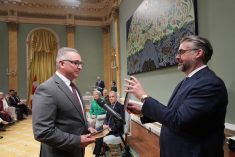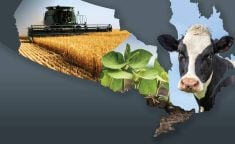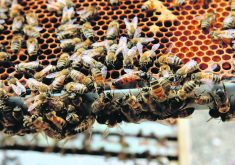Canadian dairy and poultry farmers will be able to compete with more foreign imports, says J.P. Gervais, Farm Credit Canada’s (FCC) vice-president and chief agricultural economist.
“I think we can compete with foreign products coming in because we’ve had this growth in the sector and we’ve made changes in terms of how we market the product,” Gervais told reporters April 18 during a briefing on FCC’s latest farmland values report. “So I am not overly cautious. I think that we can actually compete in the marketplace against foreign products coming in. And I think our dairy producers are going to remain financially healthy.”
Read Also

CUSMA access key among other trade noise: Seeds Canada panel
Seeds Canada conference panelists say Canada needs to stay focused and wait as U.S. trade and tariff chaos develops, and a Canada-U.S.-Mexico Agreement review looms
Canadian dairy production has increased 19 per cent over the last four years, he said. But while production went up increasing dairy receipts, prices were reduced.
“There are a lot of producers who haven’t been able to catch-up their (new milk) allocation,” Gervais said. “Some producers have had to make a lot of investments in terms of expanding their barns. I would say there are some challenges as well in dairy. It’s not just everything is so positive. It’s not an industry without challenges. I think milk producers are doing well in the current situation.”
Canada has agreed to allow more imports of dairy and poultry products under the Comprehensive Economic Trade Agreement with the European Union and the Comprehensive and Progressive Trans-Pacific Partnership (CPTPP) with Australia, Brunei, Canada, Chile, Japan, Malaysia, Mexico, New Zealand, Peru, Singapore and Vietnam.
The United States had been part of an earlier Trans-Pacific Partnership trade deal, but President Donald Trump pulled the U.S. out soon after being elected in 2016.
Trump instructed his economic advisers April 12 to look into rejoining the TPP “if the deal were substantially better.”
Trump also referred to TPP when he recently met senators worried about a trade war with China.
“I don’t want to go back into TPP, but if they offered us a deal that I can’t refuse, on behalf of the United States, I would do it,” Trump said April 18. “But I like bilateral. I think it’s better for our country. I think it’s better for our workers. And I would much prefer a bilateral deal, a deal directly with Japan. We already have a deal with six of the 11 nations in the TPP. So we already have trade deals, and the others we can make very easily.”



















